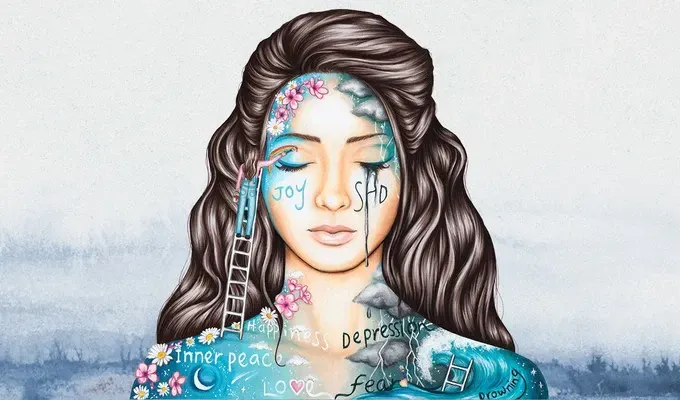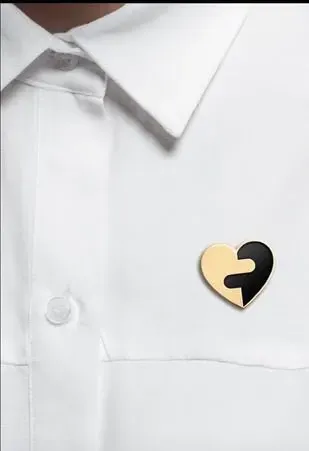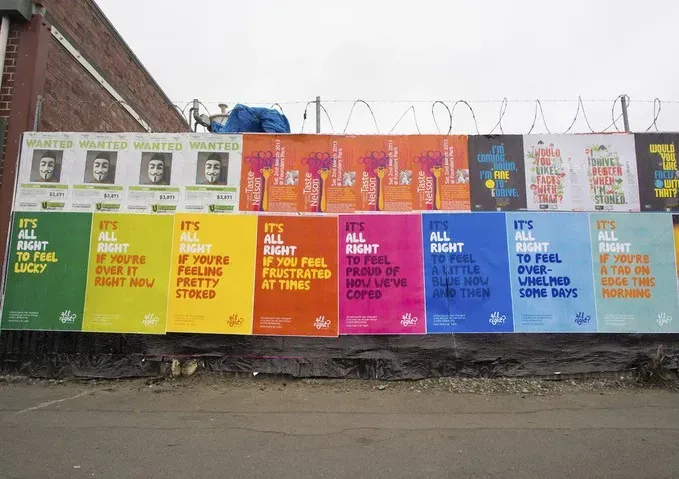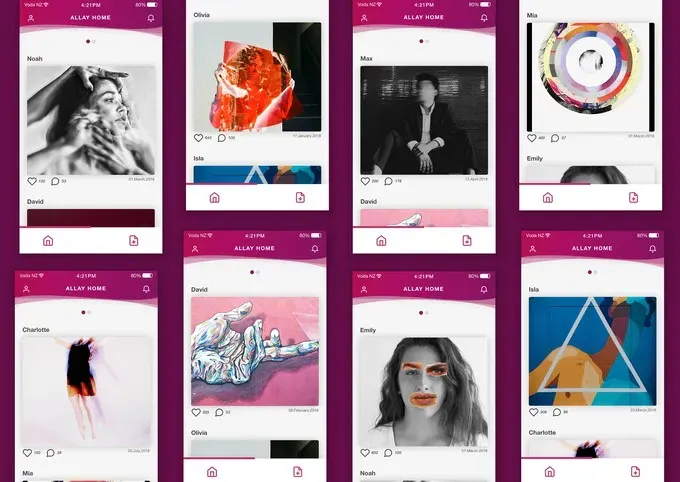How our creatives are tackling mental health
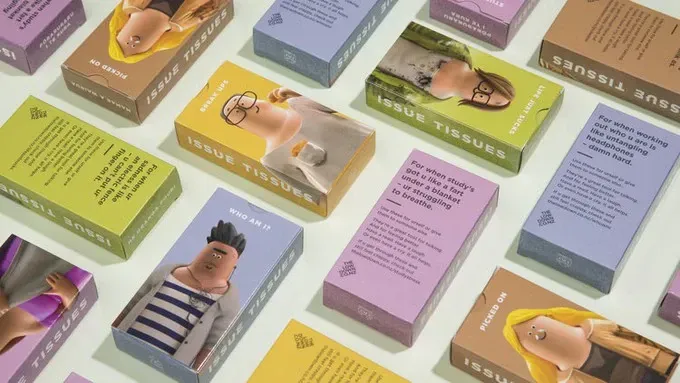
When the Government Inquiry into Mental Health and Addiction report was released in December last year, it painted a grim picture. “New Zealand is experiencing a rising tide of mental distress and addiction,” it said. “The cost of poor mental wellbeing and addiction is high. It is a high cost to individuals, families and whānau, businesses and organisations, communities, government and the country as a whole.”
While the spotlight has been shone on specific demographics, one sector that is also toiling under pressure is our creative industries. We all know the squeeze of creative work well: late nights, long hours, client demands, unrealistic deadlines, impostor syndrome, self-criticism. This, coupled with the sensitive disposition creative people tend to have, often creates an environment where mental health issues can flourish. However, these people also have a talent for communicating ideas at a time when New Zealand has a base-level awareness of the problem, but not a deeper understanding or the tools to fix it. In part two of this mini-series on mental health, Elly Strang talks to the new wave of creators who are coming up with inspiring solutions to confront our mental health problem head-on. Find the first story here.
Big, complex and ambiguous
It’s clear that New Zealand’s mental health problems are big, complex and ambiguous when trying to be distilled down to one particular cause, and not just something people from the creative sectors face, either.
But on the flipside of this, big, complex and ambiguous problems are also what creatives grapple with on a day-to-day basis through their work. It makes sense, then, that creatives can help form a language that forms a deeper understanding of mental health issues, better awareness, and tools to manage it.

Some of the young creatives leading the charge on mental health, from top left:
Voices Of Hope co-founder Jazz Thornton, Allay creator Mona Gabr, and FCB intermediate creative duo Thomas Gledhill and Lennie Galloway
In the Mental Health and Addiction report summary, it details how a community-wide effort must be made to tackle the problem and gives the example of heart disease being very high around 40 years ago in New Zealand.
“We didn’t bring in more heart surgeons, we changed our lifestyles – and significantly reduced the prevalence of cardiovascular problems,” it says.
“We think we’re at that point with mental health and addictions in New Zealand. We agree with the view that we can’t medicate or treat our way out of the current crisis. We need to ensure practical help and support in the community are available when people need it, and the government has a key role to play here. But some solutions lie in our own hands. We can do more to help each other.”
The government inquiry says that a proven method of people improving their wellbeing is by helping others – and many creatives who’ve had their own struggles find a sense of purpose and joy in allowing their personal experiences to inform their design process and storytelling.
In the last few years, more campaigns, books, products, apps and films are popping up that confront New Zealand’s mental health problem in an empathetic, meaningful way, while also offering forth some tools to help.
“I definitely think young designers are more empathetic to each other, in my experience,” DINZ’s Cathy Veninga says.
Mona Gabr
For some, it helps them make sense of and process traumatic situations, like UX designer Mona Gabr, whose personal experience informed the design process of an app for anxiety, Allay, that she created while at Media Design School. It went on to win a Student Public Good award at the 2018 Best Awards.
“Design is a powerful language that enables individuals to express themselves without even understanding what is going on” - Mona Gabr
“The idea started when the university gave us a brief to create an idea for a product or a service, so I wanted to share my experience in how design helped me overcome one of my hardest moments,” Gabr says. “Before starting university I went through a miscarriage and it was very tough, and what supported me to get over those critical moments was by joining Media Design School and creating designs.”
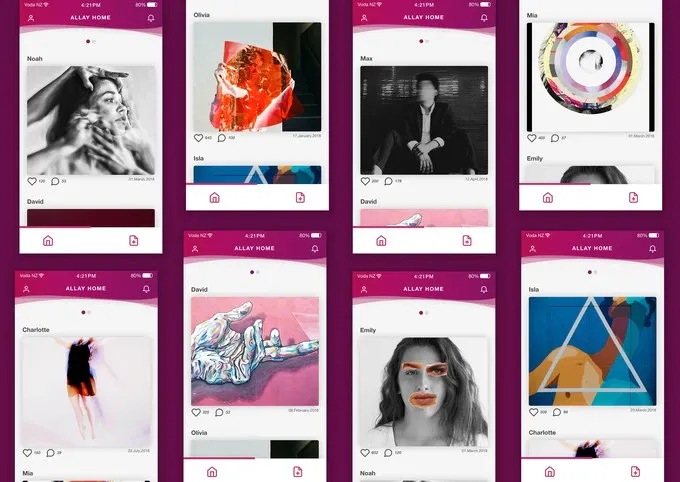
The app uses art therapy strategies similar in style to expressionist art, allowing the user to create swirling, swaying and exaggerated brushstrokes to edit an image to be a depiction of what they’re feeling in that current moment. Gabr says it uses digital design to convey the turgid emotional state of the user reacting to the anxieties of the modern world.
“Design is a powerful language that enables individuals to express themselves without even understanding what is going on,” she says. “It will help them to get rid of their bad feelings and thoughts.”
Jazz Thornton
For 23-year-old Jazz Thornton, she chose the medium of film as a way to kickstart a conversation around youth suicide. New Zealand has the highest suicide rate among teenagers aged between 15 and 19 in the OECD – and Thornton herself very nearly could’ve been another statistic.
She says the first time she tried to take her own life, she was 12-years-old. She tried many more times after that through her teenage years, before she enrolled at South Seas film school to break the silence around mental illness and create content that she would’ve needed in her darkest moments.
The first video she created, Dear Suicidal Me, clocked up 80 million views. Now, she has released a web series called Jessica’s Tree in partnership with creative agency Augusto, which retraces the steps of the last 24 hours of the life of Jessica, Thornton’s friend that committed suicide. It is being published on the NZ Herald and shows a rare perspective on what suicide looks like from the inside, as someone looking back out at those who want to help them.
Thornton says the idea came about from seeing comments on a news story of a young girl trying to jump off a bridge that said ‘attention seeker’ and ‘if that was my daughter, I would shoot her down’.
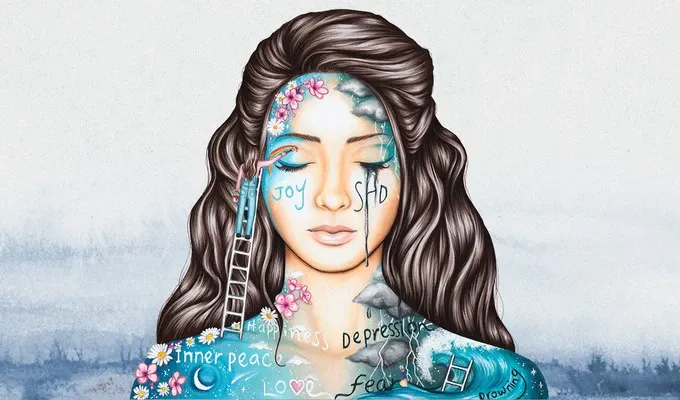
Illustration by Kristina Webb for the web series 'Jessica's Tree'
“I was horrified and knew that anyone who was suicidal that was reading those comments would never want to ask for help now,” Thornton says. “I began to think, ‘I wonder if they knew the story behind the girl standing there if they would still have the same mindset about suicide?’ That's when I decided to pitch Jessica's Tree.”
"Film has the ability and opportunity to change people’s minds, and therefore, their actions.” - Jazz Thornton
She says film and the wider creative industries hold one of the most powerful positions in the world – the ability to tell a story – and therefore, they have the power to affect real change.
“They create everything we see, they choose how the world is perceived and what people fill themselves with. You just have to look at the power of films like the R Kelly documentary, Embrace or even songs like Fight Song – these things have changed how we see and respond to real-life issues, and others have offered help to millions struggling. Film has the ability and opportunity to change people’s minds, and therefore, their actions.”
Thomas Gledhill
The other half to the FCB intermediate creative duo, Thomas Gledhill, worked on a campaign alongside Galloway called ‘Issue Tissues’ for The Lowdown, a website to help young New Zealanders recognise and understand depression or anxiety. They created unique tissue packets, with jokes on the outside and real advice on the inside, for the most common mental health problems kids face.
“We needed to engage these kids without confronting them with a scary phrase like ‘mental illness’ on a brochure. For me, talking about mental illness doesn’t have to be scary, it can be done with humour and kindness in one,” Gledhill says.
“Our job is to take the work of clinical psychologists and make it feel human and warm. I think the creative industries have a huge opportunity to create conversations about mental health that everyday Kiwis can relate to, The Journal and John Kirwan [a previous FCB campaign] showed us just how powerful mental health advertising can be.”
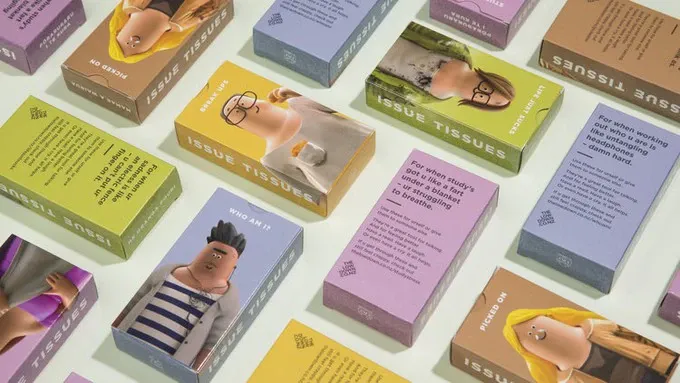
The Issue Tissues campaign by FCB for The Lowdown.
Galloway agrees, saying the creative industries have an obligation to use creativity and smart design to de-stigmatise mental illness and encourage people to seek help.
“I feel it’s my duty to help tackle mental illness – it would be selfish not to. I’m in a position where I can take personal experiences and insights, and turn those into campaigns that help others,” she says. “We as an industry do have to tread carefully though. No two experiences are the same so it would be naive to think you can ‘save people’ with your perspective alone. It’d also be naive to think you can fix people with an ad. The most helpful thing we can do is work to shift people’s perceptions of mental illness. Once the stigma is gone, people will be more likely to seek help.”
Stephen McCarthy
Founder of Christchurch-based design and branding agency McCarthy, Stephen McCarthy, has been in the unique position of producing campaigns in response to two high-profile traumatic events that shook the nation: the 2011 earthquakes, which killed 185 people and left thousands more reeling, and more recently, the terror attacks on the city’s two mosques, which killed 50 people, injured 50 others and deeply impacted the psyche of New Zealanders across the country.
Following the earthquake, McCarthy designed a wellbeing campaign for the Mental Health Foundation called All Right? Which used billboards, posters, brochures and other tools to reassure people that no matter what emotion they were feeling, their emotions were valid.
“When the earthquake happened, some people thought everything was alright a year later, but we saw research that people were really struggling for years afterwards. This told them it was okay to be feeling that way,” McCarthy says. “Overall, that’s our mandate: to help give tools and offer tools for people to discover their own wellbeing, we’re not trying to tell anyone what to do and be too preachy.”
Most recently, McCarthy created the Kotahitanga Pin – a symbol togetherness and solidarity – in response to the horrific mosque attacks in Christchurch.
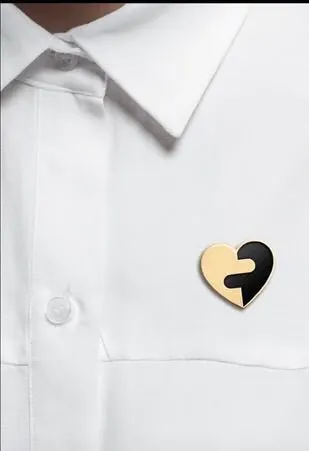
The pins have proven to be hugely popular and are onto a third release, with 100 per cent of the proceeds going to victim support. McCarthy says the response has been overwhelming, with about $80,000raised so far.
While all of these projects vary in discipline and subject matter, they all have one thing in common: they are using design as a tool to shift attitudes on mental health and giving people validation to accept that what they’re feeling in moments of distress is okay, showing how effective socially conscious design can be.
“I believe it takes people, not tools to make change and that is a difficult thing, but it's also very possible.” - Jim Antonopoulus
Given this, it seems that rather than creativity promoting madness, it can be a powerful tool to promote wellness and raise awareness around mental illness. This is significant, given the World Health Organisation warns that mental illness will be the primary cause of disability and absence in the workplace by 2030 if we don't act now.
Tank’s Jim Antonopoulos says the results of the 2018 Mental Health & Creative Industry Report show that rather than creative people being the problem, it’s the business model that needs to be looked at more closely. He says it is broken – from education through to small business – and in need of a cultural upheaval, where a focus on wellbeing is promoted within companies.
“I believe it takes people, not tools to make change and that is a difficult thing, but it's also very possible,” he says. “It starts with all of us as individuals making a change in what we accept as normal and what we each stand for — our values — and we go from there.”
Dispel the myth
The Ministry of Business, Innovation and Employment's advice for businesses on how to foster this culture of openness and support is to create a dialogue around mental illness from the top level down to dispel the myth that it’s uncommon or frowned upon, while also encouraging exercise and other activities that support wellbeing like yoga, mindfulness and meditation, and offer flexibility on hours, duties, and workspaces.
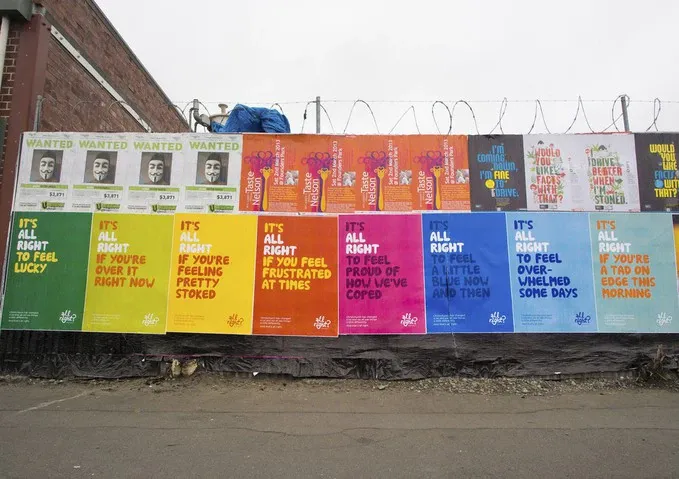
The All Right?campaign
For example, advertising agency FCB has created FCB WELL, a committee that cultivates a healthy working environment through yoga classes, fitness boot camps and when necessary, counselling services, while integrated studio Isthmus has a confidential employee assistance programme, free yoga and massage sessions, healthy snack options and aromatherapy. While these aren’t a cure for a mental health condition on their own, they foster a culture of wellbeing and acceptance.
As for greater feelings of anxiety and sensitivity among young creatives, DINZ’s Cathy Veninga says the next generation is evolving, and where that takes them is yet to be established.
“Who are we to say that pathway they’re on doesn’t take them somewhere that’s incredibly productive, that we haven’t considered yet?” she says. “It’s not all negative – there’s a much more humanising experience happening across the globe. Maybe this is one of the wonderful evolutionary outcomes – this softening and sensitising of designers who want to create better lives for humanity.”
This story was first published by our friends at Idealog as the second story in a mini-series on mental health.
